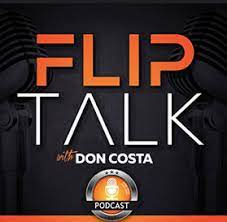|
Check out our new audio content!
Getting your Trinity Audio player ready...
|
By Jessica Guisinger and Merrill Chandler
If you are a new or seasoned real estate investor and you have been looking for capital to fund your real estate deals, there is a good chance you have heard of credit card stacking.
Credit card stacking is the practice that credit brokers use to help individuals acquire credit by applying for multiple personal credit cards at the same time. The idea is that once you are approved for multiple credit cards, you can use the newly extended credit to fund your real estate deals. While getting multiple credit cards at the same time may initially sound like a great idea, doing so can create serious problems—especially if you attempt this strategy without fully understanding the consequences.
“I think just about the worst mistake I’ve ever seen an investor make is funding a deal by employing a credit card stacking strategy,” said Jessica Guisinger, the referral partner liaison with CreditSense, a firm that specializes in improving both personal and business fundability for real estate investors and small businesses. A cursory review of their website reveals they are nothing like a credit repair agency, but rather a Fundability Optimization firm, that gives its real estate investor students and clients a great deal of specialized insight into the inner workings of credit underwriting in general, and credit approvals in particular.
“We see a lot of offer there that offer investors “funding” to do deals, but in reality they are just managing credit card stacking [for the investor],” Jessica explained. “These companies do not disclose—and investors rarely know until it’s too late— that getting the funding they need by maxing out these new credit cards will absolutely ruin the investor’s chance of obtaining future funding, and it inevitably tanks that person’s personal credit profile and score as well. And to add insult to injury, the 0% offer that was so attractive almost always disappears when they try to liquidate their credit card limit for cash.”

What credit card stacking participants don’t know is that even if they pay on-time for the next 24 months, they will be flagged as high risk borrowers because lenders view this practice as an extremely high risk behavior. The investor will also be flagged as high risk because of the sudden spike in utilization (balance to limit ratio), and a demonstration of poor credit management.
“A far better solution is to use true business lines of credit as your funding source. When you have the right credit profile these lines of credit offer the lowest rates available and you can get these business lines of credit with full check-writing capability at 3% to 6% to fund your deals,” recommended Jessica. “This type of funding is not only check-accessible, but it is unsecured as well. This feature offers a huge advantage for real estate investors because it helps make them MORE fundable while improving their personal credit rather than destroying it.”
Many real estate investors assume they cannot qualify for unsecured business lines of credit, or that they will need to pay high interest rates in order to obtain them without ever discovering the truth. Jessica noted that with the right borrowing strategies, this is patently untrue. “A lot of real estate investors need help becoming fundable because they have been playing the funding game without knowing the rules. And, not knowing the rules is made even worse because real estate investing is considered a high risk business by lenders—they don’t want to even talk to you much less give you money,” she said.

Jessica continued, “Thankfully there is hope. There’s a way for real estate investors to get inexpensive money from top tier lenders. They simply need to learn the rules of the funding game and then play that game at a professional level. In fact, if you know what you are doing, you can obtain these unsecured business lines of credit and then strategically grow them to $1 million or more in real estate funding,” she said.
“Experts who help others acquire this type of funding do not just jump in without exploring the current fundability of an interested investor,” Jessica concluded. “If someone does not do a little bit of fact-finding and a comprehensive fundability analysis before they lay out a plan for you, be on alert,” she said.




















